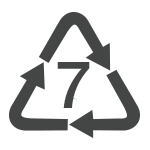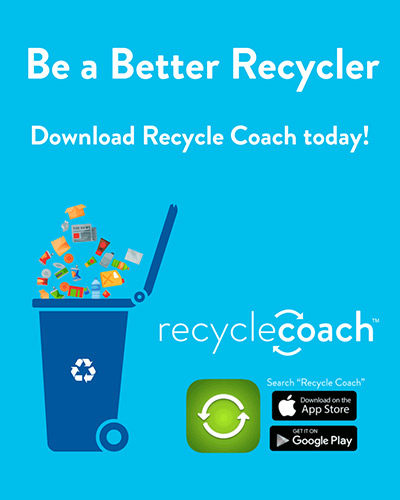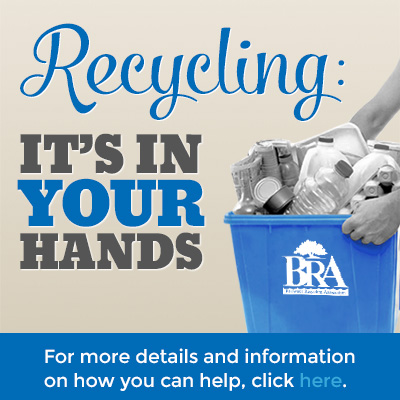Plastics
PLASTICS INTRODUCTION
The most confusing material.

The Association does not accept all plastic containers because our markets don't.
Plastic containers are the newest commodity to be recycled and the most difficult to understand. They are the newest because the plastic recycling industry in only a couple of decades old while the paper and metal recycling industry has been around for centuries. The most difficult because of the wide variety of plastic available.
In the late 80's there were over 46,000 different types of plastics with that number growing everyday as researchers discovered new ways to make plastics or additives to give them new properties. For that reason alone the plastic industry developed a coding system that identifies which type of plastic a container may be made of. The system uses the numbers 1 through 7 inside of a mobius loop to identify the six main types of plastic with number 7 being all others. The coding system is very useful in identifying the type of plastic a container is made of but it is often confused by consumers as meaning that a container is recyclable. The Association only accepts plastic bottles and containers that have established long term markets.
THE SYMBOLS
Identifying the type of plastic.
The Society of the Plastics Industry, Inc. (SPI) introduced its resin identification coding system in 1988 as a means of helping recyclers identify the resin content of bottles and rigid containers commonly found in the residential waste stream.
The presence of the coding symbol on the plastic product does not indicate that the product is recyclable or recycled locally.

Polyethylene Terephthalate (PETE): PETE is commonly used in carbonated beverage containers because of its excellent ability to keep the "fizz" in the beverage. PET is also used in food and other beverage containers because it is clear (so the contents can be seen) and resists breakage.




Polypropylene (PP): Polypropylene is used primarily in tubs, like those used for yogurt or margarine, because it is resilient to high temperatures and can accommodate hotfill liquids (i.e. when the margarine is poured into the tub, it is in a hot, liquid state). PP in its tub application is stiff allowing for a thinner wall which makes it an efficient packaging material.

Polystyrene (PS): Polystyrene is typically used as a protective plastic and can appear in either a foamed state (like meat trays) or in a clear, transparent state (like take-out bakery or deli-meat containers). Polystyrene does not absorb excess fluids (thus its use in meat trays) and is also a good insulator (making sure your coffee or soup stays hot).

'Other' Plastics: Code 7 is a catch-all for many different types of plastics. This code identifies a variety of plastics which are not in the first six categories. Code 7 can be a mixture or layers of different plastics which provide unique properties such as extending the shelf life of products.
THE ISSUES
What's so difficult?
While the plastic industry has created seven categories to identify plastics, it does not circumvent the fact that literally thousands of different types exist. The categories merely represent the family a certain polymer may be best associated with. To believe that all plastics in the same family can be recycled together is about the equivalent of saying that the parts from every vehicle ever built by the Ford Motor company is interchangeable with any car of their cars.
One of the reasons why plastics are so popular today is because they are so adaptable to the use a designer wishes to achieve. That flexibility is achieved with the countless additives and techniques that are used to get the exact characteristics desired. Each packaging has unique characteristics such colour, strength, opacity, density, temperature resistance, flexibility, etc. that make it difficult to recycle.
Sometimes it is a volume issue. Bottles made of #1 PET and #2 HDPE plastic consist of the majority (over 90%) of all plastic bottles. The next largest quantity available is the #5 PP bottle. In order to operate an efficient recycling facility, millions of pounds of materials are needed to make it feasible. In the case of PP bottles half of North America would have to collect them to make one plant viable. Imagine the rest of the plastics.
Until we can find more alternative solutions, we are limited with respect to what is acceptable in the recycling program. Please review the next few pages to assist you with what we can do for you today.





